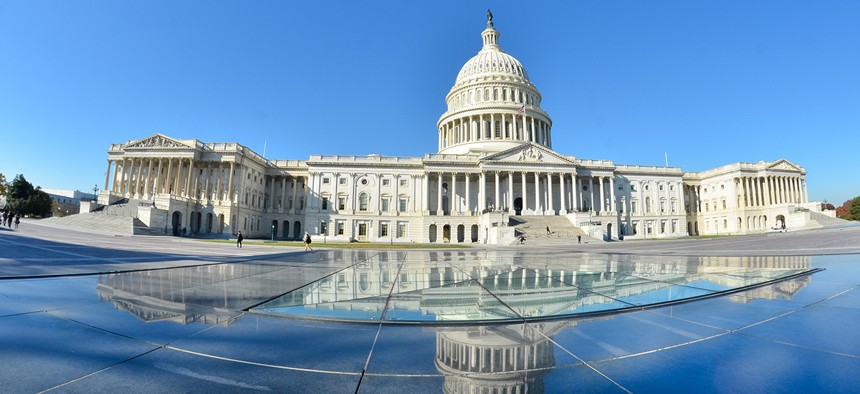IT Upgrade Fund Faces More Skepticism in Congress

Orhan Cam/Shutterstock.com
Lawmakers say they want to see more details about the plan.
Legislation to establish a $3.1 billion revolving fund to help federal agencies pay for IT system upgrades will soon be on its way to Capitol Hill.
Denise Turner Roth, the head of the General Services Administration, said this week the Obama administration planned to deliver to lawmakers proposed legislation for the IT modernization fund in the next few weeks.
But the IT fund is continuing to draw criticism from lawmakers who say they want to see more details about the plan.
“I question the proposed $3 billion in mandatory funding and $100 million in discretionary funding,” said Rep. Anders Crenshaw, chairman of the House appropriations subcommittee with oversight of GSA. “For what exactly? We don't know, because the administration has not formally transmitted legislative language to the Congress.”
President Barack Obama proposed creating the new fund last month as part of a national cybersecurity action plan included in his 2017 budget request. The funding, which would be managed by GSA, would give agencies a new funding stream to modernize aging legacy IT systems that are expensive to operate, crash more frequently and are at higher risk of cyberattacks.
Crenshaw questioned the need for the new fund, saying agencies should be requesting funding to refresh their systems on a regular basis as part of the regular budget process.
“We have been continuously supportive of funding IT upgrades as part of agencies' annual budget requests,” he said during a Feb. 29 hearing on GSA’s budget
Even Democrats on the committee aren’t yet sold on the idea.
“I would be very open to conversations about how to make our IT procurement system more nimble and responsive to changing technologies,” said Rep. Jose Serrano, D-N.Y., the panel’s ranking member. “But I'm not sure if this particular request is the way to do it."
Roth defended the new fund, saying a lack of funding to support IT upgrades is a “major vulnerability” for federal agencies.
“As agencies look to replace legacy systems, the highest cost is really in that initial upfront cost,” Roth said. That’s because agencies have to keep spending money to maintain existing systems at the same time they’re requesting additional funding to kickstart development on new ones.
Agencies would apply for funding in installments and would have to pay back into the fund once their new systems go live.
The modernization fund “also has the benefit of helping us see across government,” Roth testified. “Sometimes, agencies are trying to deal with a legacy issue in a silo ... when actually the solution may be something that either multiple agencies can utilize or multiple agencies have already solved for."
Part of the criticism stems from the way the funding for the $3.1 billion pot of money would be apportioned. As Crenshaw mentioned, only about $100 million of it would actually come from congressional appropriations. The other $300 billion would come from one-time mandatory funding.
Crenshaw said that looks like an attempt “to circumvent the regular appropriations process.”
Still, the appropriators’ criticism paled in comparison to the reception the IT modernization fund has received elsewhere. Chairman of the House Oversight and Government Reform Committee Rep. Jason Chaffetz, R-Utah, in a hearing last week called the proposal “hogwash.”
Noting that the federal government spends more than $80 billion overall on IT each year, he added, “To suggest we're just $3 billion away from actually solving this problem is ridiculous.”
(Image via Orhan Cam/Shutterstock.com)


